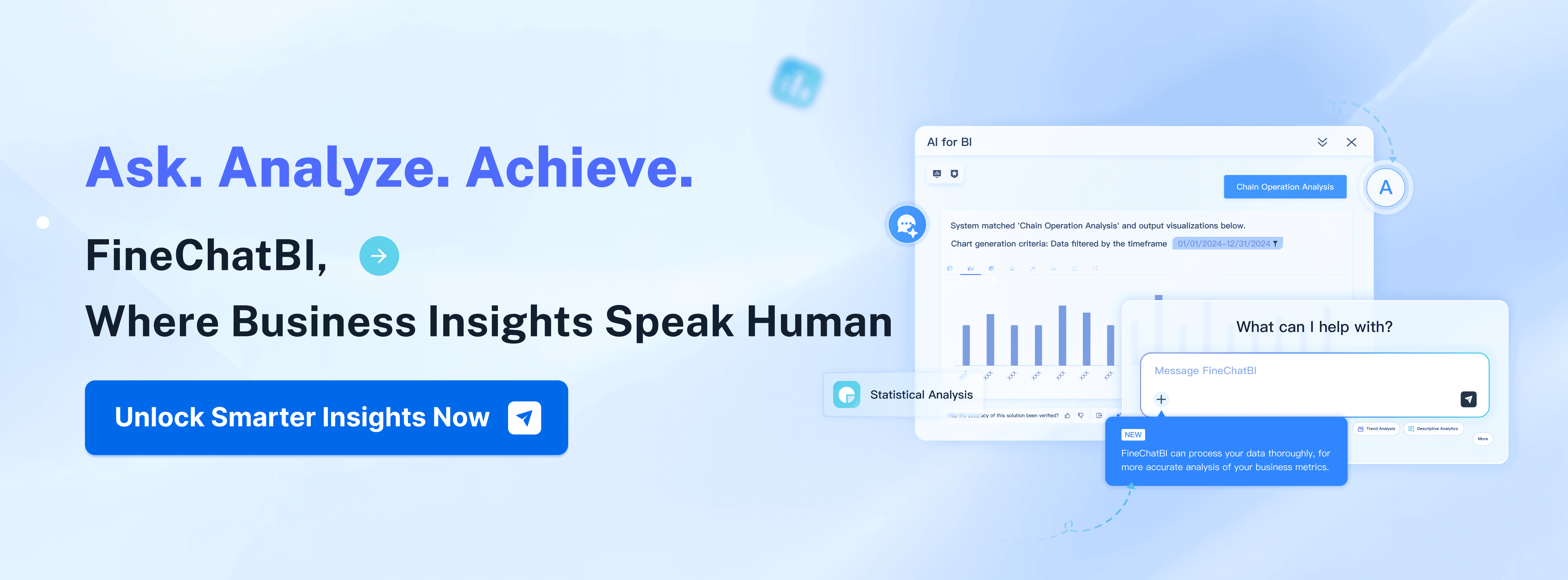No, AI will not fully replace data analysts. Picture yourself at work, wondering if your job will survive the next wave of technology. You see AI tools everywhere, handling tasks like anomaly detection and predictive modeling. In fact, two out of five companies worldwide rely on AI for data analysis. Take a look at this quick breakdown:
| Application | Percentage |
|---|---|
| Data Analysis | 55% |
| Predictive Modeling | 47% |
| Generative AI | ~33% |
| Anomaly Detection | ~33% |
AI automates routine tasks and frees you up for strategic thinking. But will data analysts be replaced by ai? Not quite. You bring context, creativity, and human judgment that machines can’t match.
Will Data Analysts Be Replaced by AI?

You might wonder, will data analysts be replaced by ai? The short answer is no, but the story is more interesting than that. AI is changing the way you work, but it’s not taking over your job. Instead, it’s making your daily tasks faster and easier, so you can focus on what really matters.
What AI Can Do in Analytics
AI has become a powerful assistant in data analytics. It can handle repetitive tasks, spot patterns, and create reports in seconds. Imagine you have a mountain of data. AI can sift through it, clean it up, and even highlight trends before you finish your morning coffee. Here’s a quick look at what AI can do for you:
| Task Description | Example Applications |
|---|---|
| Automating repetitive analytical tasks | Data collection, cleansing, processing, and basic reporting |
| Surface-level insights and recommendations | Best analytics practices, creating valuable data sources, optimal report formats |
| Identifying baseline insights | Correlations between inputs and outputs across historical datasets |
| Automating data preparation | Data cleaning, transformation, integration, and enrichment |
| Creating automated data visualizations | Identifying patterns and anomalies |
| Automating exploratory data analysis | Drawing meaningful conclusions for decision-making |
| Automated data cleaning and transformation | Identifying errors and outliers in large datasets |
| Data integration and enrichment | Matching and merging related data from different sources |
AI can generate dashboards, write SQL queries, and produce visualizations almost instantly. You no longer need to spend hours on manual data preparation. In fact, a recent survey found that 67% of data leaders have already implemented AI copilots for analytics. Most of them—79%—say these tools save time and make users happier. However, some leaders are still figuring out how to help analysts whose main tasks have been automated.
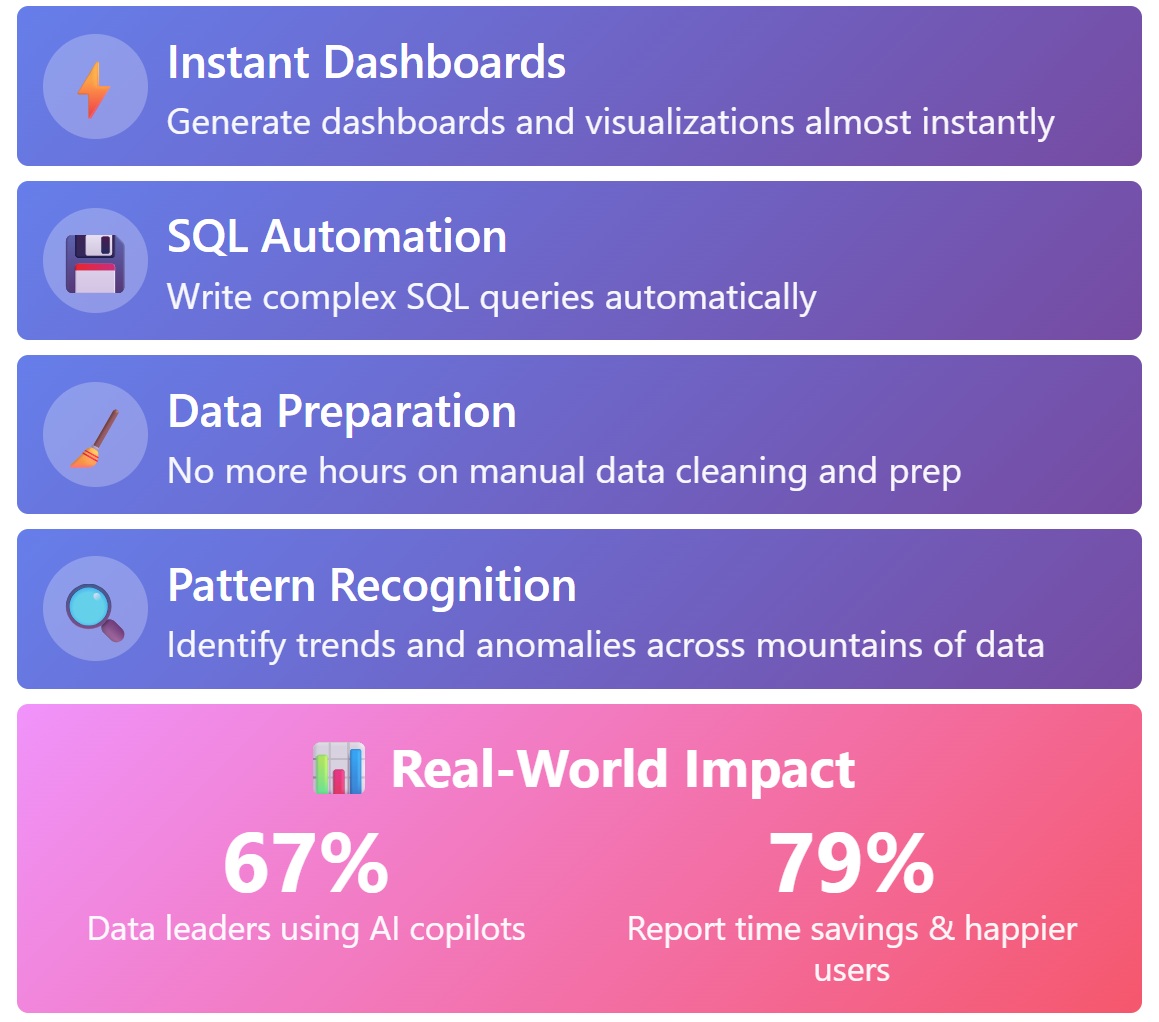
Let’s look at why some people think AI could replace data analysts:
| Argument | Description |
|---|---|
| Speed and Efficiency | AI can analyze datasets and test hypotheses much faster than humans, monitoring thousands of metrics and surfacing anomalies instantly. |
| Role Evolution | The role of data analysts is shifting towards curation and facilitation, with AI handling more routine tasks. |
| Complex Task Handling | AI is expected to manage end-to-end analysis in many domains, outperforming humans in various analytical tasks. |
But here’s the twist: the best results come when you use AI as a partner, not a replacement. Analysts who use AI tools can work up to five times faster and with greater accuracy than those who don’t. AI systems have even achieved diagnostic accuracy rates of 94% in radiology and 95% in ophthalmology. In financial predictions, AI hits 60% accuracy, while humans average 53–57%. Still, AI can’t match your ability to understand context or bring emotional intelligence to the table.
Tip: AI can process and analyze data at speeds that humans can’t match, but you bring creativity and judgment that machines lack.
FanRuan and FineChatBI in Data Analysis
You don’t have to look far to see how advanced tools support, rather than replace, data analysts. FanRuan offers a suite of solutions that make your work smoother and more impactful. FineChatBI, for example, lets you interact with your data using plain language. You can ask questions, get instant answers, and even see visualizations—all without writing a single line of code.
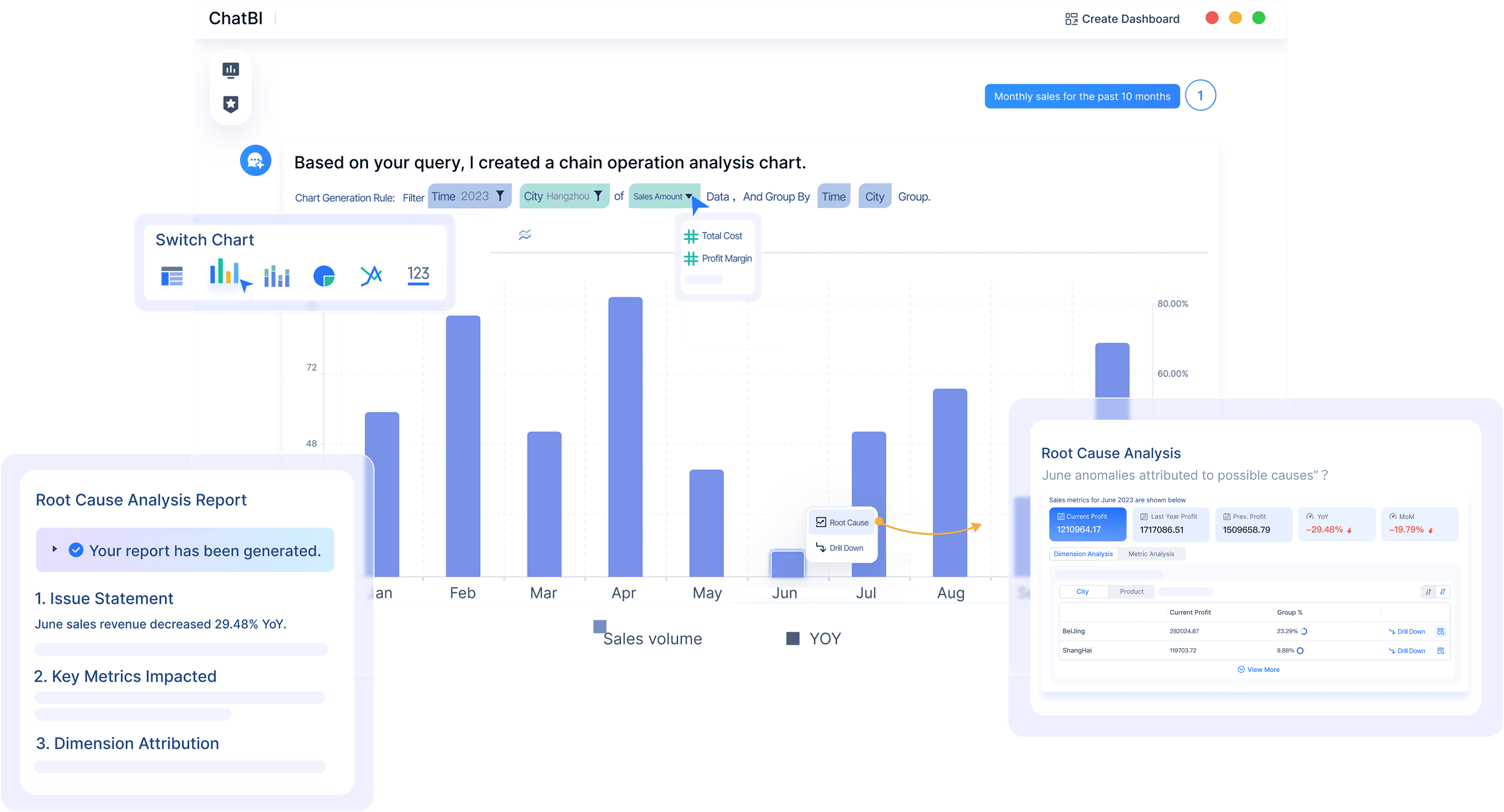
Here’s how FanRuan and FineChatBI help you shine:
| Feature | Description |
|---|---|
| Self-Service Analytics | FineBI empowers you to explore data independently, making analysis simple and accessible. |
| Data Integration | FineDataLink synchronizes data across systems in real time, solving integration and quality headaches. |
| Reporting & Visualization | FineReport transforms raw data into visual stories with a zero-code dashboard builder. |
| High-Performance Engine | FineBI processes massive datasets quickly, so you don’t have to wait for results. |
| Augmented Analytics | FineBI automatically generates analyses, helping you spot trends and insights fast. |
| Role-Based Access | FineBI keeps your data secure by assigning permissions based on roles. |
You can drag and drop to build dashboards, use over 60 chart types, and even perform ETL/ELT processes for data prep. FineChatBI takes it a step further. You just type your question, and the system understands your intent, pulls the right data, and shows you the answer—sometimes with a chart or a table. This means you spend less time wrestling with data and more time making business decisions.
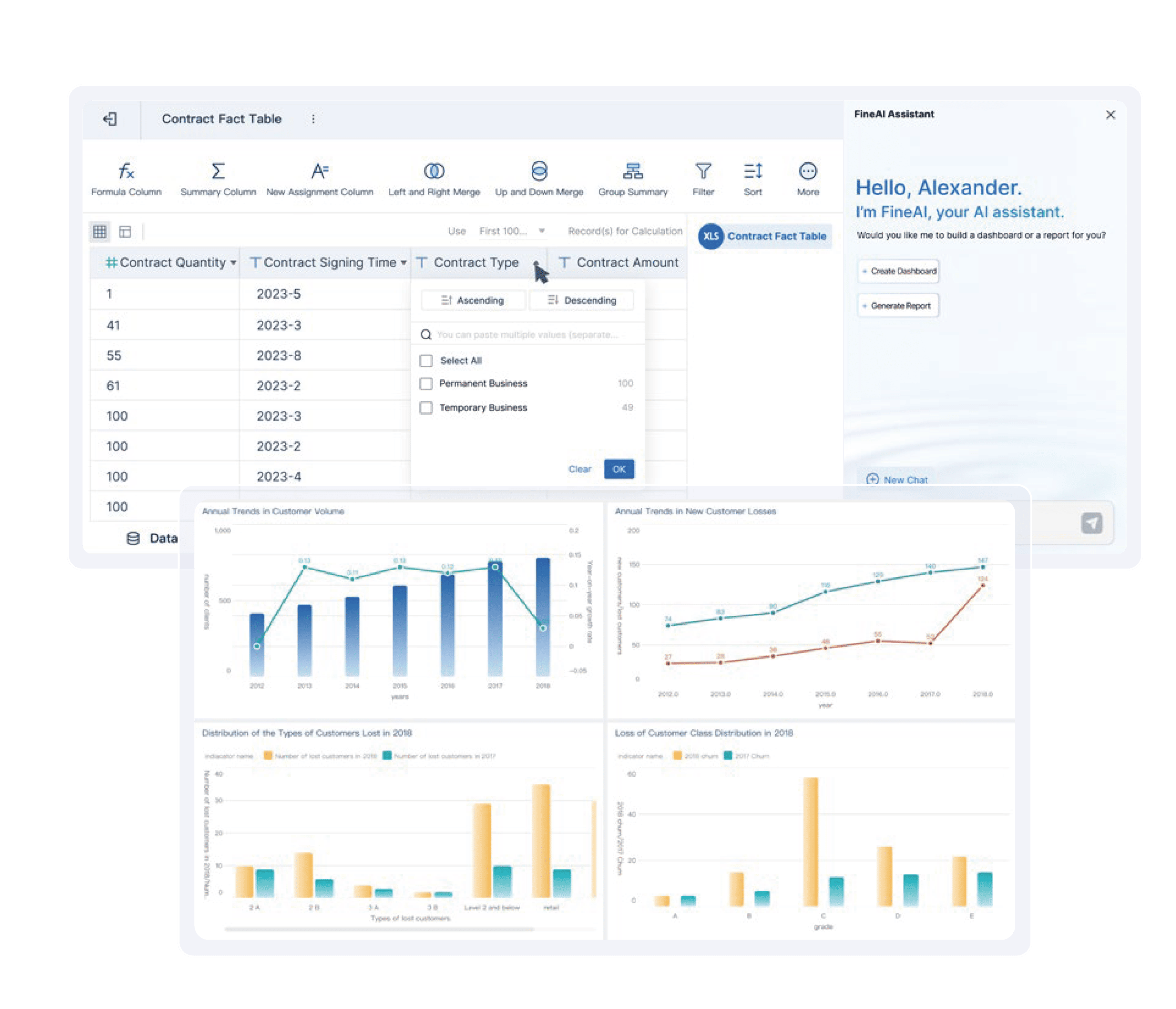
FanRuan’s tools also boost your workflow efficiency. For example, FineBI 7.0 lets you analyze new data fields instantly, without waiting for updates. Multiple users can edit resources at the same time, which makes teamwork easier. The system’s stability and scalability mean you can handle bigger projects without worrying about downtime.
Check out this chart to see how organizations are adopting AI-powered analytics by 2025:

Nearly one in four organizations expect to give 30% or more of their workforce direct access to AI-powered analytics soon. Many plan to triple workforce access to AI-driven business intelligence by 2026. With tools like FanRuan and FineChatBI, you’re not just keeping up—you’re staying ahead.
So, will data analysts be replaced by ai? Not in 2025. Instead, you’ll find yourself working alongside AI, using it to handle the heavy lifting while you focus on strategy, context, and creative problem-solving. Machine learning and automation will keep evolving, but the human data analysts will always play a key role in turning data analysis into real business value.
Where AI Falls Short for Data Analysts
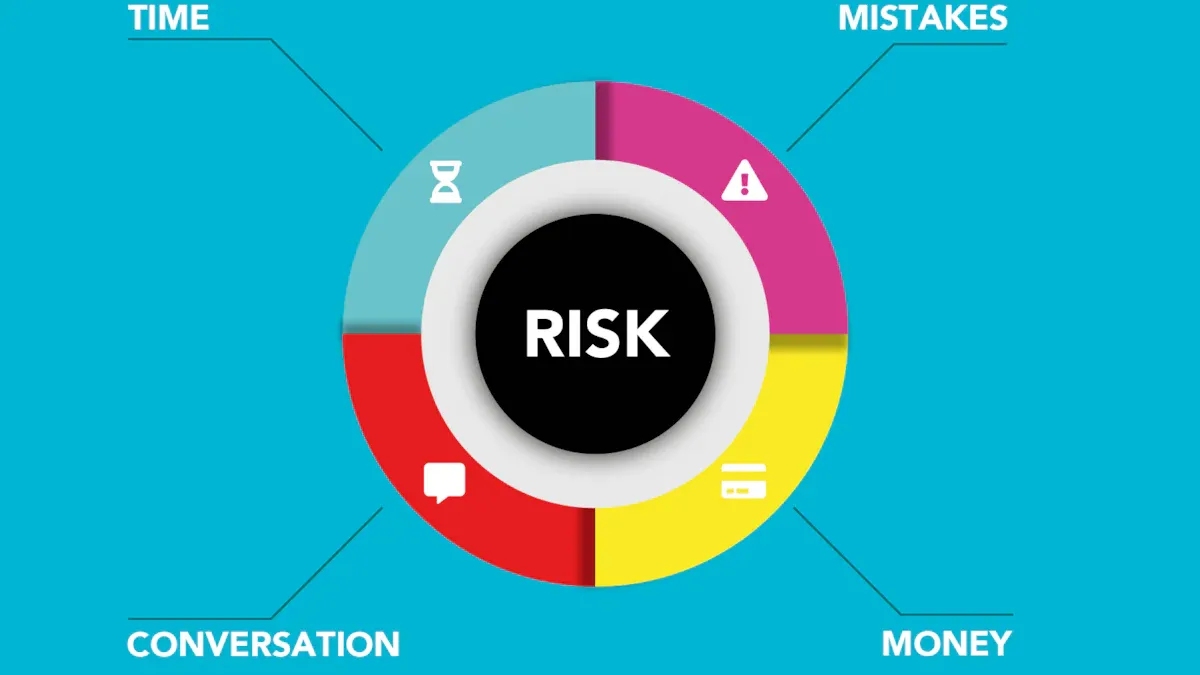
Context and Critical Thinking
You might wonder, will data analysts be replaced by ai if machines seem so smart? The answer is still no, and here’s why. AI can process huge amounts of data, but it struggles with context. When you look at a messy dataset, you use your experience to spot what matters. You know where the data came from, how it was collected, and what outside factors might affect the results. AI can’t always see these hidden details.
Here’s a quick table showing where AI falls short in business settings:
| Key Factors | Description |
|---|---|
| Contextual Understanding | AI struggles to grasp the full context of business operations, which is essential for decision-making. |
| Transparency | AI systems often lack transparency in their decision-making processes, complicating trust and compliance. |
| Intuition and Emotional Intelligence | AI cannot replicate human intuition or emotional understanding, which are critical in complex business scenarios. |
| Tacit Knowledge | AI fails to capture tacit knowledge that is often crucial in nuanced business contexts. |
| Accountability and Privacy | Concerns about accountability and privacy are significant barriers to AI adoption in businesses. |
You use critical thinking to clarify goals, check if data is credible, and spot patterns or outliers. This skill helps you draw valid conclusions and make recommendations that fit your company’s needs. AI can augment your work, but it can’t replace your judgment or creativity. You bring the human touch to data analytics, making nuanced decision-making possible.
Communication and Ethics

When it comes to sharing insights, human data analysts have a big advantage. You can turn complex findings into stories that make sense for different audiences. AI can generate reports, but it can’t tailor messages or handle tough questions from stakeholders. Here’s a quick look at how you compare to AI:
| Human Skills | AI Capabilities |
|---|---|
| Data storytelling | Report generation |
| Executive communication | Data processing |
| Stakeholder management | Pattern recognition |
| Contextual understanding | Data analysis |
| Tailored insights | Generic insights |
Ethics is another area where human involvement is critical. AI can inherit biases from its training data, raising fairness and privacy concerns. You need to watch for these issues and make sure your data analysis stays fair and transparent. You also help keep machine learning projects on track by asking tough questions and making sure decisions align with company values.
In the end, data analytics needs both AI and the human touch. AI can handle the heavy lifting, but only you can provide the context, communication, and ethical oversight that turn data into real business value.
The Future of Data Analysts with AI

Evolving Roles and Skills
You might ask yourself, will data analysts be replaced by ai as artificial intelligence gets smarter? The answer is still no. Your role as a data analyst is changing, but you remain essential. AI now handles repetitive tasks like cleaning data and generating reports. This shift lets you focus on strategic thinking and creative problem-solving.
Check out how your skills are evolving:
| Skill Type | Description |
|---|---|
| Automation and Scripting | You can automate tasks using Python, R, or RPA tools. |
| AI-Powered Analytics | You use AI tools to dig deeper and find strategic insights. |
| No-Code and Low-Code Platforms | You work with platforms that let you analyze data without heavy coding. |
| Machine Learning and AI Integration | You learn algorithms to make smarter predictions and reduce manual work. |
The demand for data analysts with AI proficiency is rising fast. You see more job openings every year. In the US, the Bureau of Labor Statistics expects a 23% jump in analyst jobs by 2032. India projects 11 million new data analyst positions by 2026. You need to keep learning, adapt to new tools, and work with AI systems to stay ahead.
FanRuan’s Vision for Data Analytics
FanRuan believes in a future where you use data analytics to make better business decisions. The company’s solutions—FineReport, FineBI, and FineDataLink—help you turn complex data into clear insights. You get real-time analytics, predictive modeling, and tools that let you trust your results.
At FanRuan, we believe that a data-centric culture and real-time business intelligence are essential for this transformation. Our solutions—FineReport, FineBI, and FineDataLink—empower IT leaders to turn complex data into actionable insights, aligning technology initiatives directly with business growth.
FanRuan’s FineChatBI lets you ask questions in plain language and get instant answers. You don’t need to be a coding expert. You can explore trends, forecast risks, and share insights with your team. This approach makes data analytics more accessible and helps you collaborate with AI.
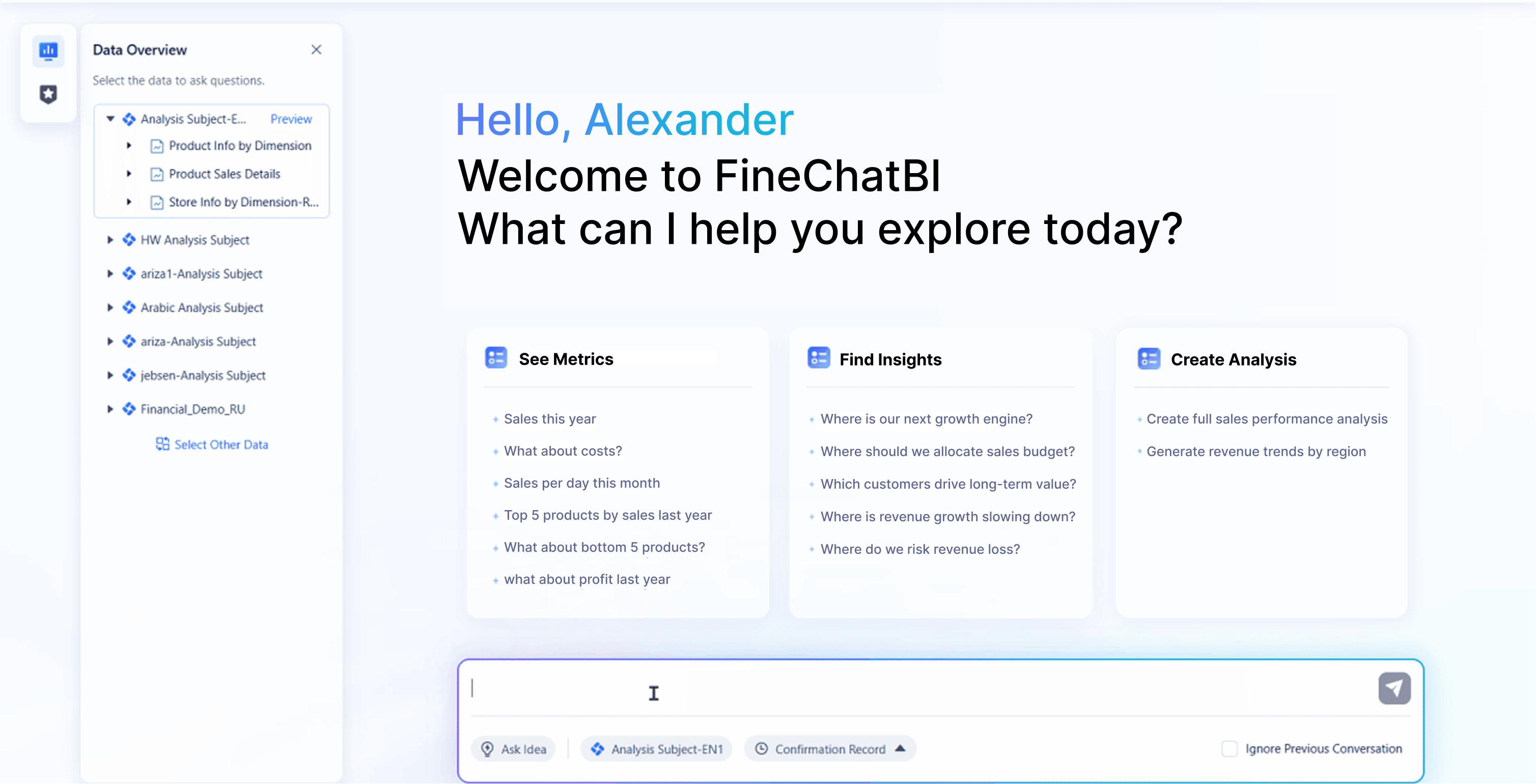
You see human-AI collaboration everywhere. In healthcare, AI helps doctors analyze scans and improve cancer detection. In education, AI tutors adapt to each student’s needs, boosting learning outcomes. Artists use AI to create new designs and push creative boundaries. These examples show how you and AI work together to solve problems and make smarter decisions.
You shape the future of data analysis by combining your thinking with AI’s speed. You bring context, creativity, and ethical oversight. AI gives you the power to process data quickly and spot patterns. Together, you drive innovation and build trust in your business decisions.
You don’t need to worry about AI taking your job. Instead, you can focus on building skills that help you work better with technology. Try learning new tools, improving your communication, and staying curious. Here are some ways to stay ahead:
- Take courses on machine learning and data visualization.
- Practice critical thinking and problem-solving.
- Work on sharing your findings with others.
FanRuan’s FineChatBI helps you grow by offering tools that make data analysis easier and more accurate.
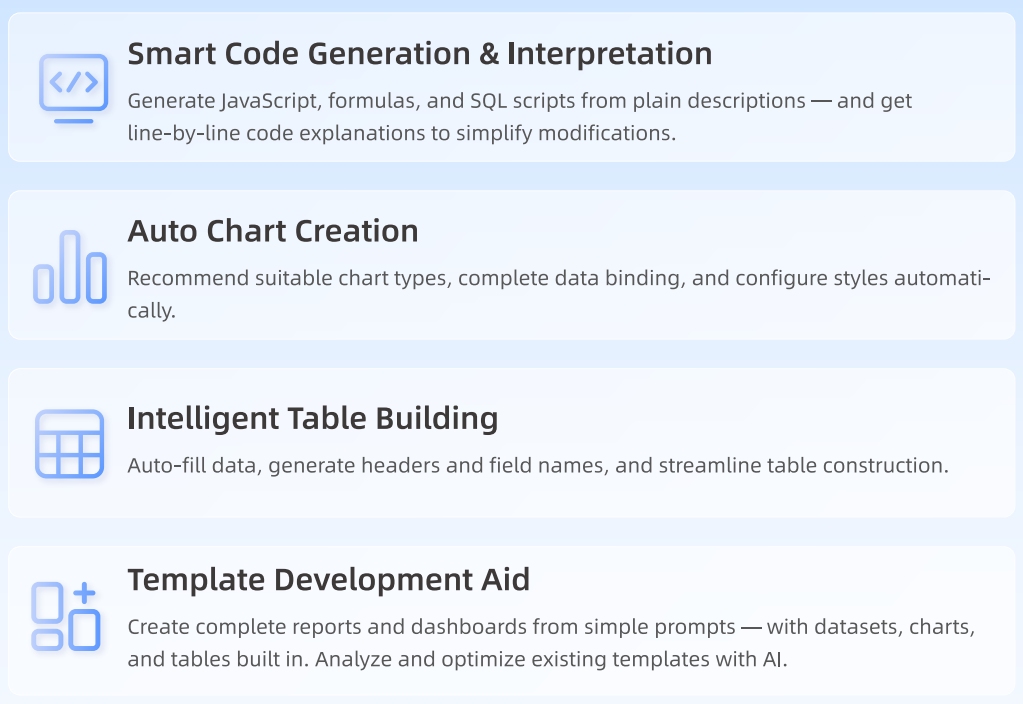
The future looks bright when you combine human creativity with smart technology.
FAQ

The Author
Lewis
Senior Data Analyst at FanRuan
Related Articles

What Is AI Data Analysis in 2025
AI data analysis in 2025 uses machine learning and NLP to process data, uncover patterns, and deliver fast, accurate insights for smarter decisions.
Lewis
Dec 18, 2025

The 10 Best AI Data Tools Every Analyst Should Know
See which AI data tools for 2025 help analysts automate tasks, boost productivity, and uncover insights with advanced analytics and seamless integration.
Lewis
Dec 17, 2025
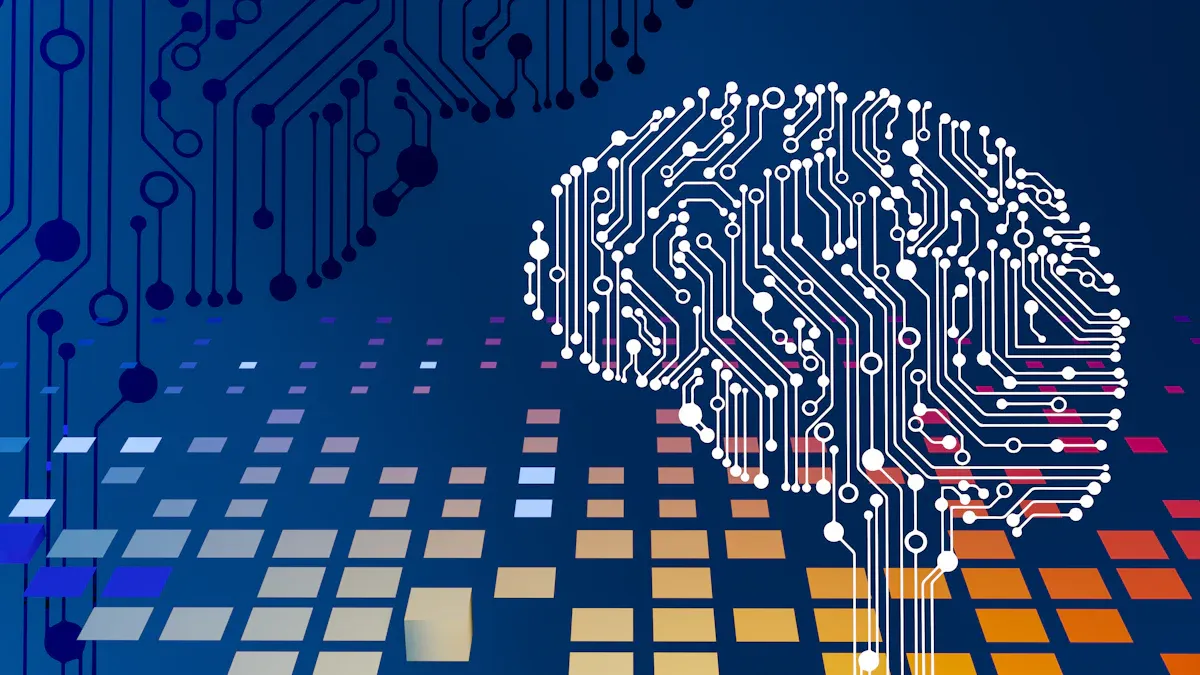
What Is Data Analytics and Artificial Intelligence
Data analytics and artificial intelligence work together to deliver faster insights, automate tasks, and improve accuracy for smarter business decisions.
Lewis
Dec 09, 2025
